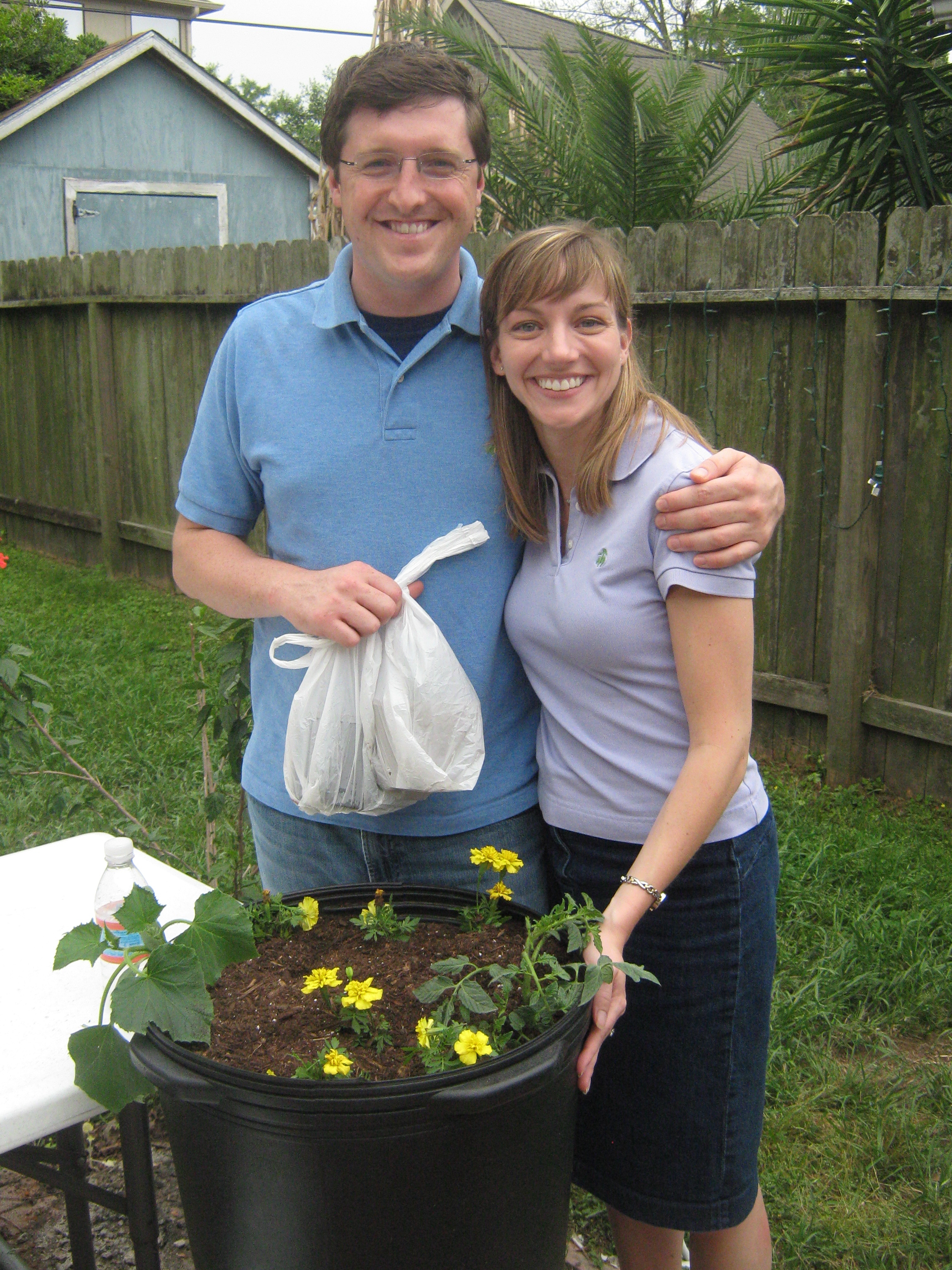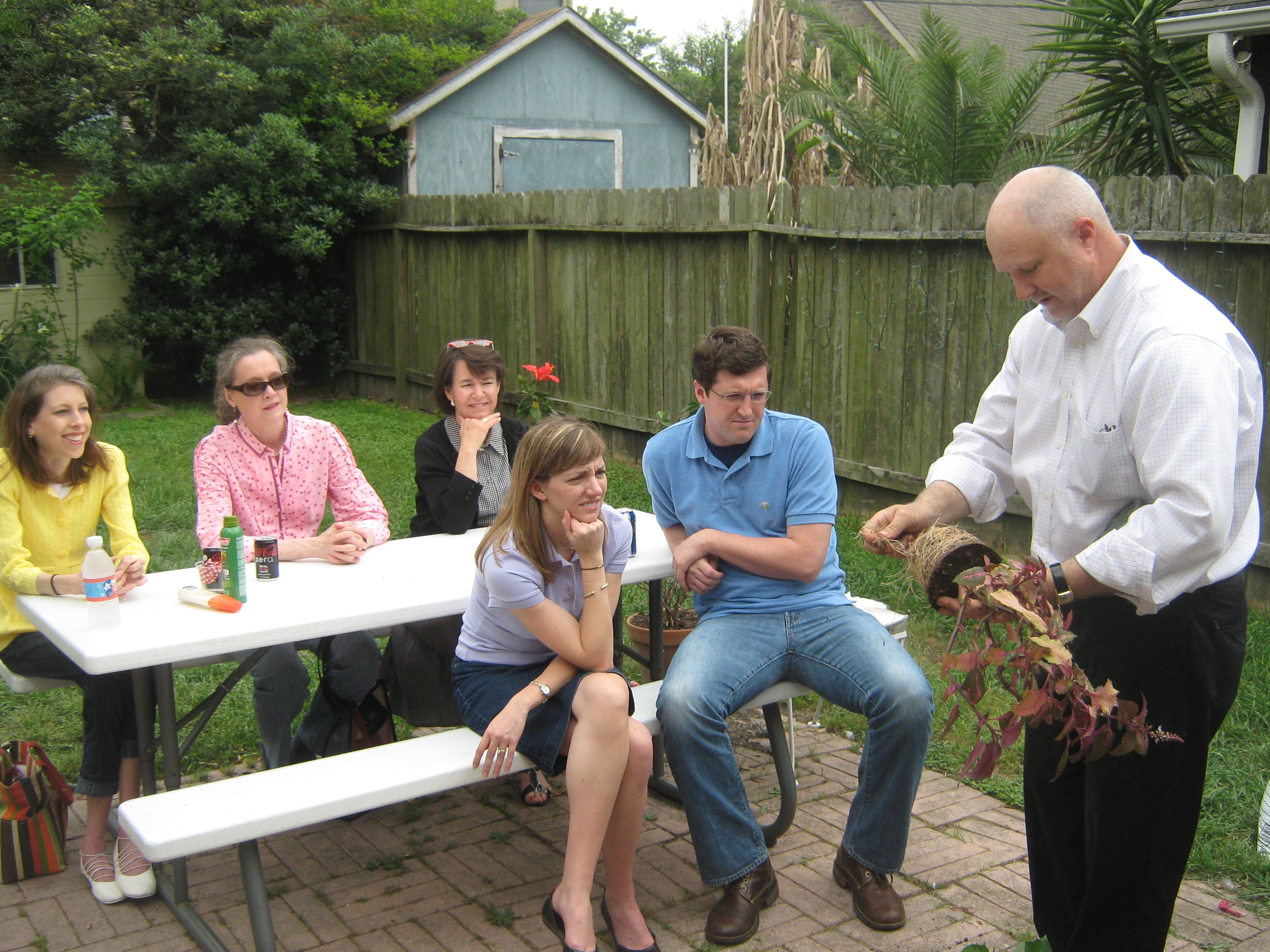I recently read the 2009 survey results of the gardening world by the National Gardening Association (http://www.garden.org/). One of the stats that I found very interesting was the amount of money the average person reportedly spends on their food garden. According to the NGA survey, the average vegetable gardener only spends $70 per year on their garden. Now I realize that I am not the average gardener, but $70? Really? I spend an average of $30 per month on just compost. So this got me thinking. Could I create a vegetable garden (on paper) with just $70 worth of supplies?

There really is nothing better than home grown tomatoes
To do this, I had to make some assumptions. Using the NGA data, I decided to be average. According to their report the average vegetable garden in the US is 600 square feet. Using this I decided to have a 21’ X 30’ (I know that is 630 square feet, but go with me) virtual garden. This garden would contain 4-30 foot rows. Each row would be 3 feet wide and there would be 3 feet wide walk paths between the rows. In this space I would plant the Top Ten vegetables grown in US gardens (based on results from the same survey). Those vegetables are tomatoes, cucumbers, sweet peppers, beans, carrots, summer squash, onions, hot peppers, lettuce and peas. I also assume that this $70 experiment only covers the spring garden. Finally, since I garden organically, my $70 garden will use organic principals as well.
Below are the four rows that I have designed.
Row 1 –English peas the 10th most grown veggie in the American garden. Normally I plant them in January. For this garden, I am going to recommend putting them on Feb. 1. A little late here, but this is just an experiment and they will probably still produce when planted this late (especially if you live north of Dallas). Carrots can go in at the same time. Beans are a little less cold hardy so I am going to virtually plant them Feb. 15.
 All of these veggies will be planted by seeds. The beans and peas will be spaced at 6” and I will get three rows in each three foot bed. To plant this many beans and peas, you will need to buy two packs of seed for each. I selected “Contender” bush beans from Baker Creek Heirloom Seeds. They were $2 per pack so the beans will cost $4. I found 100 “Green Arrow Peas” from Seed Savers Exchange for $2.75. The carrots will be planted in a staggered grid plan at 4” spacing. You will need 2 packs of seed for this many carrots. Since the seeds are so tiny it is difficult to get just one seed per hole. I chose “Danver” from Seed Savers Exchange. The two packs were $5.50.
All of these veggies will be planted by seeds. The beans and peas will be spaced at 6” and I will get three rows in each three foot bed. To plant this many beans and peas, you will need to buy two packs of seed for each. I selected “Contender” bush beans from Baker Creek Heirloom Seeds. They were $2 per pack so the beans will cost $4. I found 100 “Green Arrow Peas” from Seed Savers Exchange for $2.75. The carrots will be planted in a staggered grid plan at 4” spacing. You will need 2 packs of seed for this many carrots. Since the seeds are so tiny it is difficult to get just one seed per hole. I chose “Danver” from Seed Savers Exchange. The two packs were $5.50.
Row 2 –Around here, we plant our onion sets in November or December. For this garden, we are going to assume that we planted 300 10-15Y onions in November. They are stagger planted 6” apart in three rows that are 20’ long. This would require two bunches of sets and would have set us back about $6. Now 300 is a lot of onions. However, I love them and they keep well so I also plant a lot. I planted the onions in the middle of the row. This leaves two 5’ beds on either side.
 In both of these beds I am planting lettuce from seed. I love lettuce and there are a ton of varieties. All do well in the cool season so you can plant whatever variety you choose. I always plant two different varieties of leaf lettuce. To plant beds this size, you will need about four packs of seeds. At $1.50 each, that is another $6.
In both of these beds I am planting lettuce from seed. I love lettuce and there are a ton of varieties. All do well in the cool season so you can plant whatever variety you choose. I always plant two different varieties of leaf lettuce. To plant beds this size, you will need about four packs of seeds. At $1.50 each, that is another $6.
Row 3 – This whole row is dedicated to cucurbits. 30 feet is a lot of room for our squash and cucumbers, especially since they are both so productive. Each of these plants need about 3’ of space. I will plant six hills of squash (2-yellow crook neck, 2 zucchini, and two patty pan). I will then plant four trellises of Poinsett cucumbers. I grow these every year and they are awesome! They are very productive and are great as slicers and for pickling. I build thee-legged trellises for them out of cedar limbs. Four trellises will allow us to have 12 vines. This will be more than enough. For this row we will be using 4 packets of seeds at $2.50 each so the whole row will cost just $5.
 Row 4 –Tomatoes are the stars of most summer gardens. They are the number one grown vegetable in the home garden. For the last row of our gardenwe will buy and plant six tomatoes, two Jalepenos and two Bell pepper plants. I usually buy plants because it is much easier than planting from seed in January and then nursing to April. I always plant my tomatoes and peppers the first week in April. I usually make sure and plant at least two plants of each tomato variety that I select. My favorite for slicing tomato is an heirloom called “Black From Tulia”. I also usually plant a cherry variety and a grape variety. We also love Romas so we grow a yellow variety called appropriately “Yellow Roma”. I do not have a favorite Bell or Jalepeno variety. I typically plant whatever they have at the nursery. I buy well established tomatoes in quart containers. Each of these usually cost about $4 a piece so you are going to have to part with $24 for this row. I buy peppers in 4’ pots and they are usually about $1.5 a piece.
Row 4 –Tomatoes are the stars of most summer gardens. They are the number one grown vegetable in the home garden. For the last row of our gardenwe will buy and plant six tomatoes, two Jalepenos and two Bell pepper plants. I usually buy plants because it is much easier than planting from seed in January and then nursing to April. I always plant my tomatoes and peppers the first week in April. I usually make sure and plant at least two plants of each tomato variety that I select. My favorite for slicing tomato is an heirloom called “Black From Tulia”. I also usually plant a cherry variety and a grape variety. We also love Romas so we grow a yellow variety called appropriately “Yellow Roma”. I do not have a favorite Bell or Jalepeno variety. I typically plant whatever they have at the nursery. I buy well established tomatoes in quart containers. Each of these usually cost about $4 a piece so you are going to have to part with $24 for this row. I buy peppers in 4’ pots and they are usually about $1.5 a piece.
 My little experiment has proven that you can have an average garden with the ten most common plants for under $70. Including the 8.25% Texas sales tax, my total came out to $64.13. That leaves enough for 5 bags of compost (which I highly recommend). I know this doesn’t account for water or mulch or about a million others things you can spend your gardening dollars on, but it does prove that if you have decent soil you can have a very nice garden for a small amount of money. According to the NGA survey, this $70 garden will produce $600 dollars worth of food. So, this garden is good for both your health and your pocket book! February in Central Texas means it is time again to go outside and get dirty! Happy gardening y’all!
My little experiment has proven that you can have an average garden with the ten most common plants for under $70. Including the 8.25% Texas sales tax, my total came out to $64.13. That leaves enough for 5 bags of compost (which I highly recommend). I know this doesn’t account for water or mulch or about a million others things you can spend your gardening dollars on, but it does prove that if you have decent soil you can have a very nice garden for a small amount of money. According to the NGA survey, this $70 garden will produce $600 dollars worth of food. So, this garden is good for both your health and your pocket book! February in Central Texas means it is time again to go outside and get dirty! Happy gardening y’all!
P.S. If gardening stats fire you up then you can read my full analysis of the results of the NGA survey in next issue of Texas Gardener.







































